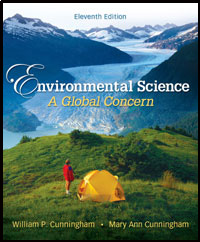1 A) iron deficiency. B) overeating. C) inadequate intake of vitamins. D) inadequate intake of minerals. 2 A) scurvy. B) kwashiorkor. C) marasmus. D) anemia. 3 A) increasing consumption of red meat. B) increasing consumption of unsaturated plant oils. C) increasing consumption of carbohydrates like pasta and potatoes. D) decreasing consumption of nuts. 4 A) moving genes from one type of organism to another. B) carefully selecting pollinators for crop plants. C) creating synthetic genes for favorable traits. D) all of the above. 5 A) these genes will escape from potatoes and disrupt other natural ecosystem functions. B) these genes will mutate to become lethal to the potato plants that contain them. C) natural selection will rapidly produce strains of potato bugs that are immune to the toxin in the plant. D) the cost to farmers will exceed the benefits. 6 A) TRUE B) FALSE 7 A) TRUE B) FALSE 8 A) TRUE B) FALSE 9 A) TRUE B) FALSE 10 A) the efforts a nation expends to protect its food resources from invasions by other countries B) the ability to obtain sufficient food on a day-to-day basis C) the individuals who distribute food in underdeveloped nations. D) None of the above 11 A) True B) False 12 A) entails the consumption of local foods. B) tends to be less energy consumptive. C) is based on the consumption of raw foods. D) both 1 and 2 are correct. E) 1, 2, and 3 are correct. 13 A) 2,200 B) 3,500 C) 1,000 D) none of the above; caloric intake has nothing to do with being chronically undernourished 14 A) TRUE B) FALSE 15 A) refers to the condition of being chronically undernourished. B) means lacking in certain specific dietary components. C) is a condition suffered by nearly 20% of the world's population. D) all of the above are correct. 16 A) is no longer restricted to the wealthy nations of the world. B) is spreading along with western diets and lifestyles. C) substantially increases the risk for a number of diseases. D) all of the above are correct. 17 A) can cause blindness. B) are rarely detected, as they have no immediate effects. C) are no longer common. D) none of the above. 18 A) kwashiorkor B) anemia C) marasmus D) 1 and 2 are correct E) 1 and 3 are correct 19 A) cassava, corn, and rice B) corn, beans, and potatoes C) wheat, rice, and corn D) corn, soybeans, and barley 20 A) TRUE B) FALSE














